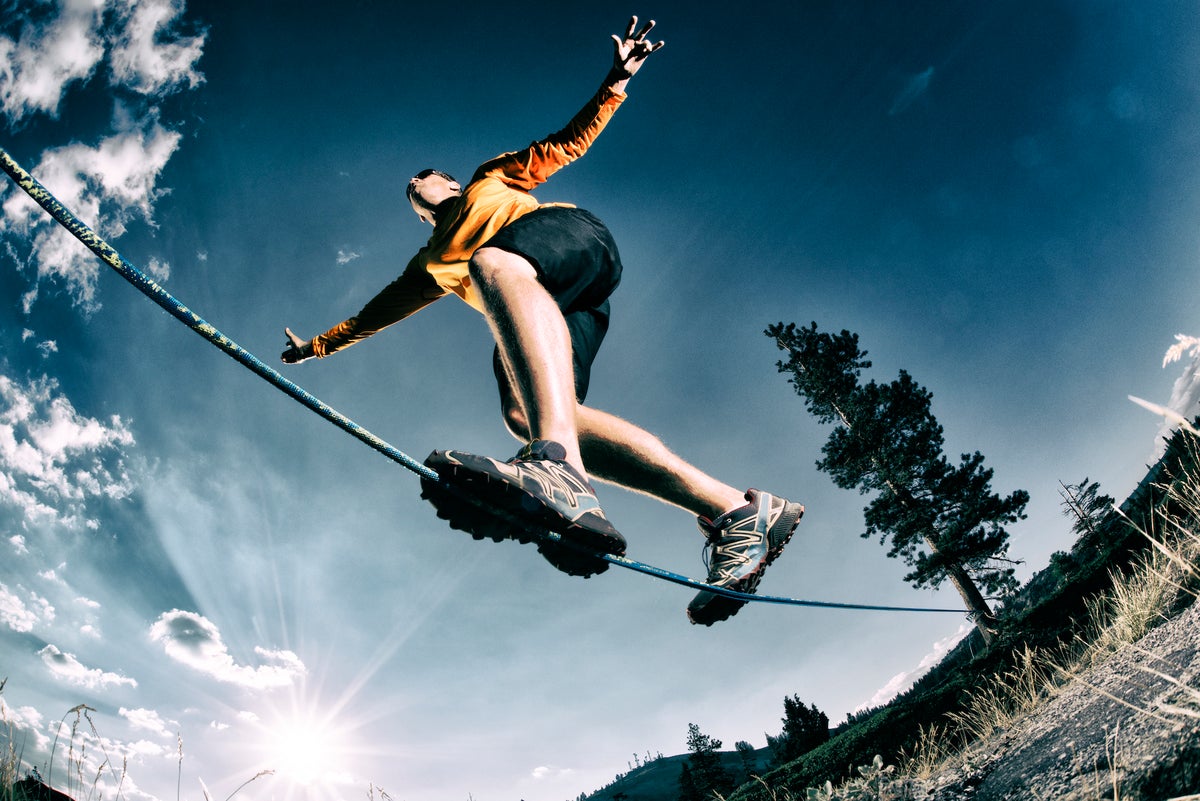Products You May Like
Get full access to Outside Learn, our online education hub featuring in-depth fitness, nutrition, and adventure courses and more than 2,000 instructional videos when you sign up for Outside+
Sign up for Outside+ today.
As skiers, we know that balance is an essential skill, but it’s one we often take for granted. While we know that building muscle strength and endurance in the gym will help improve our skiing ability, we don’t think of improving balance and coordination in the same way.
But if your goal is to improve on the slopes—if you want to finally master the art of standing against the outside ski and learn to tip your skis on edge without your body tipping the same way—you should incorporate balance training in your workout routine.
Improving balance is about more than just learning to stay centered. It’s about motor control and proprioception—that is, understanding how to move your body to adapt to changes in your environment. “It’s about how your brain perceives where you are in terrain, relative to the ground,” explains JC Cole, Human Performance Director for Ski and Snowboard Club Vail in Minturn, Colo.
When we’re skiing, our environment is constantly changing, from the snow conditions and terrain underfoot to visibility conditions. The more finely tuned our body is to react to these changes, the better and more quickly we’ll be able to adapt and stay centered over our skis.
There are lots of ways to train balance and motor control for skiing, from cross-training activities like mountain biking, paddle boarding, and trail running, to focused exercises on balance equipment. Here, we list some of our favorite affordable balance tools that target the key stabilizer muscles that skiers rely on and make balance training fun. And for some inspiration on how to incorporate them into your workout routine, take a cue from the pros.
Best Balance Training Tools for Skiers
Bosu Ball
This versatile piece of equipment can be used either flat side down, or flat side up to increase the balance challenge. If you’re new to Bosu ball training, start with the flat side down. You can perform basic moves like two-footed squats or lunges onto the rounded top, or see how long you can balance on one leg.
Related: Try this Bosu ball workout designed specifically for skiers
When you’re ready to progress, flip the Bosu so the flat side is up and practice standing and squatting with the rounded side down. When you’re ready to level up, just look through pro skier John Collinson’s Instagram account. The Bosu ball was a go-to piece of equipment during his last ACL rehab, and he shared some of his favorite (and aspirational) Bosu moves.
Balance Pad
There are different kinds of balance pads out there, from simple foam squares and rectangles to inflated and round rubber pads. The foam pads are more beginner-friendly and versatile. You can incorporate them into your standard workout routine by performing lunges with one foot on the pad to add an extra stability challenge. Or you can place them on top of a plyo box and practice landing and balancing on them when you perform your plyo box jumps. The inflated rubber balance pads can be used in the same way but are far more challenging. However, they do work the stabilizer muscles of the lower leg harder.
Read more: Increase strength and power for the slopes with plyometric training
Balance Board
These, too, come in varying shapes and sizes, and each is challenging in different ways. Some challenge your fore-aft balance, while others challenge your stability in all directions. Some even come with interchangeable parts so you can switch up between balancing on a rocker, roller, or pad. We’re fans of the Revolution boards, which come in sport-specific designs that help train balance patterns natural to skiing, hockey, surfing, etc.
Related: We talked to Linsey Vonn for 7 minutes while she was skiing powder
Slackline
This is the most challenging but perhaps the most fun piece of equipment on this list. Slacklines challenge stabilizer muscles across the entire body—your legs and your core—and are therefore great for improving balance on the slopes. Cross country skier Jessie Diggins is a big fan of slackline training, as are members of the U.S. Ski Team. Slacklines are usually between 50 and 60 feet long and around two-inches wide, though narrower ones exist and will increase the balance challenge. If you’re new to slacklining, pick a wider slackline with low stretch webbing, which can be suspended closer to the ground because it’s more rigid.
Looking for more training tips designed specifically for skiers? Check out SKI‘s Get Fit to Rip course on Outside Learn. The comprehensive online training plan was designed by former U.S. Ski Team strength and conditioning coach Chris Miller and features full workout videos that you can follow at home.
